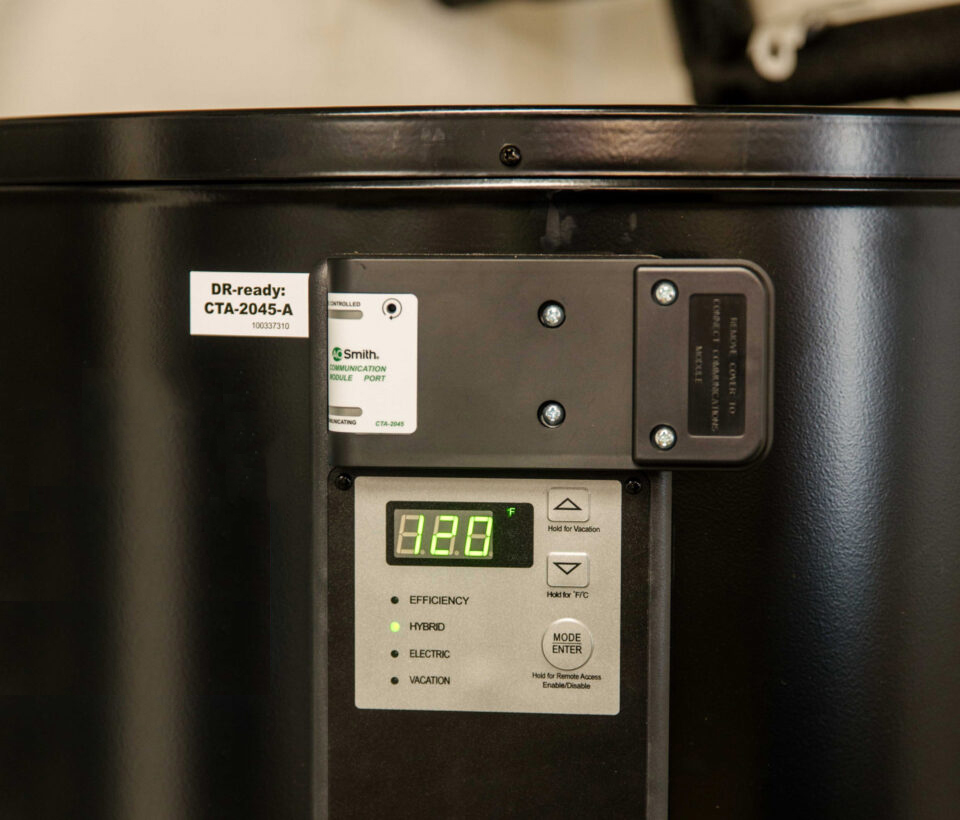Understanding the EcoPort Interface on Heat Pump Water Heaters
As standard and heat pump water heaters (HPWHs) are installed in more and more homes across the U.S., utilities are looking for ways to integrate them into demand response programs.

What is an EcoPort?
The EcoPort, also called a CTA-2045 port, is a built-in communication interface that comes standard on many new heat pump water heaters. Paired with a Universal Communication Module (UCM), it allows the water heater to connect with utility programs that help manage energy use to align when energy is more plentiful or less costly.
These demand response programs help utilities balance energy demand with energy supply by adjusting the operation of connected household appliances like water heaters, smart thermostats, dishwashers, and more during peak hours. The small shifts or reductions in energy use typically aren’t noticeable at the individual product level but can add up at scale.
Participation in these utility programs can also help keep energy affordable for consumers, as many utilities offer incentives that reward customers for reducing their energy use during these high-demand times.
How Does It Work?
While the EcoPort is built into all Tier 3 through Tier 5 HPWH models, it requires a UCM to function and participate in a utility program. Here’s how it works:
- Customers in eligible locations sign up for a demand response or load management program with their local utility.
- The utility provides a UCM that plugs into the EcoPort, enabling communication between the water heater and the grid.
- The utility can then adjust the HPWH’s energy usage based on the program agreement—such as shifting water heating to off-peak hours or temporarily pausing operation during peak demand.
It’s important to note that participation is voluntary by the customer, and adjustments can typically be overridden if needed.
Where Are Demand Response Programs Available?
The availability of demand response programs for water heaters varies by region. Many utilities in the Northwest and beyond are piloting or actively running programs that provide incentives for customers who enroll, and more are scheduled to come online in the coming years.
Check with the utilities in your service territory to see what programs are offered in your area.
What This Means for Installers
As a plumbing professional, knowing about the EcoPort and modules—as well as utility demand response programs—can help you:
- Educate customers on how their HPWH can integrate with utility programs, if they are interested in doing so
- Guide customers toward available energy savings and incentives
- Stay ahead of the curve as grid-connected appliances become more common
By understanding the value and purpose of the EcoPort, you can help your customers maximize the value of their heat pump water heater while keeping their energy costs more affordable.
